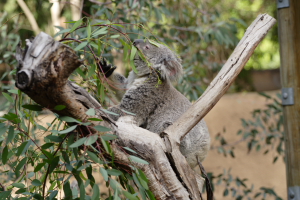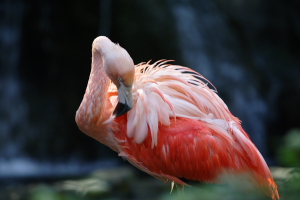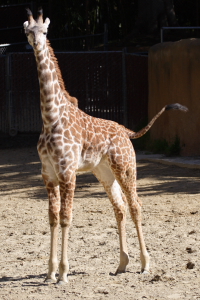Zoo Animals
February 18, 2007

The only other thing that inhibited me was the zoo’s use of fences. In this case I could still capture an image but the autofocus would always focus on the fence. I found it was best to use manual focus in this case. Using manual focus takes some getting used to. I will never be as fast as the USM autofocus on my Canon lenses but I’m getting better. With some practice you can pull a subject in focus in a second or two.
When I was shooting animals in direct sunlight I made sure to set the camera to expose the shot by one stop more then it thought it should expose. I know it sounds backards but if your camera is evaluating the whole shot with it’s light meter it will tend to underexpose the shot. The only time you might not want to set the camera to expose the shot more is if any part of the shot is washed out or the highlights appear blown. You can check this on the histogram if your camera provides one. If the chart looks like it is pushed up against the right and some stuff looks cut off then the exposure was too long and you should compensate accordingly.
This brings me to my last point. If you are going to purchase a Digital SLR camera and spend at least $1000 between the camera and all the related accesories then why not learn how to use it. While I was at the zoo I saw all kinds of people with cameras. At least 6 people had SLR cameras and of those maybe two knew how to use them. The rest were shooting in Auto mode. I could tell because it would pop up the flash everytime they took a picture. Now even I do not shoot in full manual mode except in a few special occasions but I almost always am in aperture priority or shutter priority mode. 




